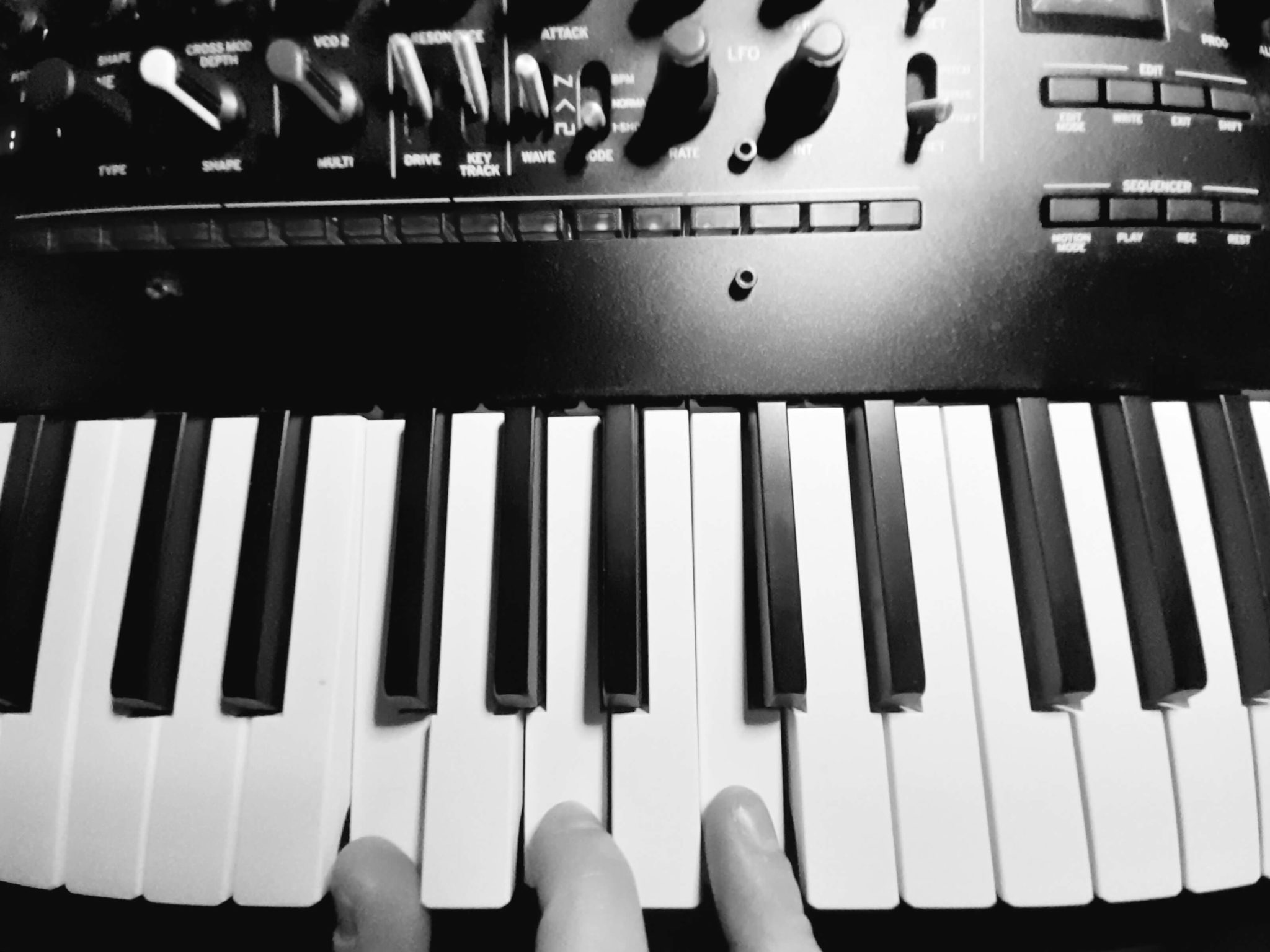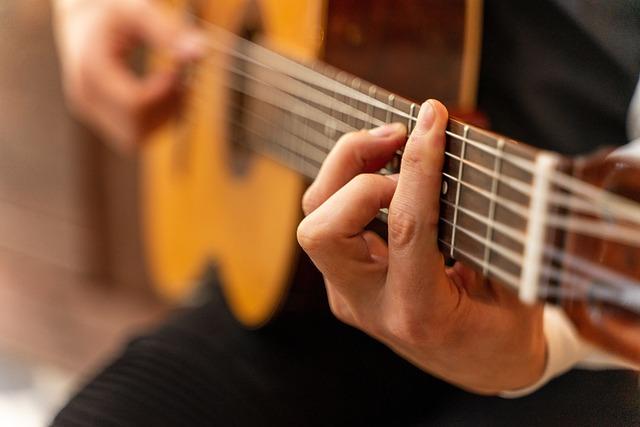Greetings fellow guitar enthusiasts! Have you ever found yourself strumming the same old chords on your guitar, feeling like your fingers are stuck in a musical rut? Fear not, for we are about to embark on a wild and wacky journey through the world of chord variations and fingerings on the guitar. Get ready to unleash your inner rock god (or goddess) as we dive headfirst into the uncharted territory of funky finger positions and mind-bending chord shapes. So grab your guitar, brace yourself for some musical madness, and let’s get ready to rock and roll!
Contents
- 1 Understanding Basic Chord Structures on Guitar
- 2 Exploring Major and Minor Chord Variations
- 3 Mastering Barre Chord Techniques and Variations
- 4 Navigating Through Seventh Chords and Their Fingerings
- 5 Incorporating Suspended and Add Chords for Texture
- 6 Experimenting with Alternate Tunings for New Chord Voicings
- 7 Developing a Practice Routine for Chord Variation Mastery
- 8 FAQs
- 9 Rock On with Your Chord Variations!
Understanding Basic Chord Structures on Guitar
Alright, fellow guitar enthusiasts, today we’re diving into the wonderful world of basic chord structures on the ol’ six-string. No more fumbling around trying to figure out what the heck a G#m7add11 chord is supposed to sound like – we’re keeping it simple and fun!
First things first, let’s talk about the three main types of chords you’ll encounter: major, minor, and dominant. Sounds like something out of a kingdom, doesn’t it? Well, in the world of guitar, these are the rulers of the chord castle. Learn ’em, love ’em, and use ’em to create musical magic!
Next up, let’s break down how chords are actually constructed. It’s like building a musical LEGO set, only without the excruciating pain of stepping on a stray brick. Remember, a chord is made up of three or more notes played together. Here’s a handy cheat sheet:
- Major chord: Root note, major third, perfect fifth
- Minor chord: Root note, minor third, perfect fifth
- Dominant chord: Root note, major third, perfect fifth, minor seventh
And finally, let’s talk about chord progressions. Think of these as the roadmaps for your musical journey. You can mix and match chords to create different moods and vibes in your songs. Just remember, there are no wrong turns – only unexpected detours that lead to musical awesomeness!

Exploring Major and Minor Chord Variations
Are you tired of playing the same old major and minor chords on your guitar or piano? Do you want to spice up your music and impress your friends with some unique variations? Look no further, because we’ve got some fun and funky chord variations for you to explore!
First up, let’s talk about major chords. Sure, they’re great for happy, upbeat songs, but why not add a little edge to your music with some major 7 and major 9 chords? These jazzy variations will take your sound to the next level and make you feel like a musical maestro in no time.
And don’t forget about the minor chords! While they can add a touch of melancholy to your tunes, why not experiment with some minor 7 and minor 11 chords for a more soulful sound? These variations will make your music stand out from the rest and show off your artistic flair.
So, grab your instrument, get creative, and start exploring the world of major and minor chord variations. Who knows, you might just discover your new signature sound and become the next musical sensation!

Mastering Barre Chord Techniques and Variations
Alright, so you’ve finally decided to tackle those pesky barre chords. Congrats, you brave soul! But fear not, for I am here to guide you through the treacherous waters of .
First things first, make sure your fingers are properly warmed up before diving into the world of barre chords. Stretch them out, do a few finger exercises, maybe even treat them to a little mini massage. Trust me, your fingers will thank you later.
Now, onto the fun stuff – variations! Why stick to just the basic barre chord shapes when you can spice things up with some fancy variations? Try experimenting with maj7, min7, and dim7 shapes to add some flavor to your playing. Who says barre chords have to be boring, right?
And remember, practice makes perfect. Don’t get discouraged if you don’t nail it on the first try. Keep at it, keep pushing yourself, and soon enough those barre chords will bend to your will. You’ve got this!

In the world of music theory, seventh chords can sometimes feel like a maze that you’re trying to navigate through with a blindfold on. But fear not, brave musician! With a little practice and a lot of patience, you can conquer those tricky seventh chords and their fingerings like a pro.
First things first, let’s talk about the different types of seventh chords. There’s the major seventh chord, the minor seventh chord, the dominant seventh chord, and the oh-so-mysterious half-diminished seventh chord. Each one has its own unique sound and fingerings, so it’s important to get familiar with them all.
When it comes to actually fingering these chords on your instrument, it can be a bit of a challenge. But don’t worry, practice makes perfect! Take some time to really focus on the placement of your fingers and the angles of your hand. It may feel awkward at first, but eventually, your fingers will start to move with ease.
Remember, practice makes perfect – or at least tolerable. So grab your instrument, take a deep breath, and dive headfirst into the world of seventh chords. Who knows, you might just discover a new favorite sound along the way!

Incorporating Suspended and Add Chords for Texture
Looking to add some depth and complexity to your chord progressions? Look no further than incorporating suspended and add chords for some extra texture! These chords can add a whole new dimension to your music, making it sound more interesting and unique.
One of the easiest ways to incorporate suspended chords is to simply replace a regular major or minor chord with a suspended chord. Suspended chords have a dreamy, unresolved sound that can add a sense of tension and anticipation to your music. Experiment with using suspended 2nd (sus2) and suspended 4th (sus4) chords in place of regular major and minor chords for a fresh, modern twist.
Another great way to add texture to your chord progressions is by incorporating add chords. Add chords are simply major or minor triads with an additional note added from the scale. These chords can add a jazzy, sophisticated flair to your music. Try adding a major 7th or 9th to your chords for a lush, harmonically rich sound.
Don’t be afraid to experiment with different combinations of suspended and add chords in your music. Mixing and matching these chords can create unexpected and captivating harmonies that will keep your listeners on their toes. So go ahead, have fun with your chords and see where your musical journey takes you!
Experimenting with Alternate Tunings for New Chord Voicings
Have you ever wanted to add some spice to your chord progressions? Well, look no further! I recently stumbled upon the magical world of alternate tunings and let me tell you, it’s a game changer.
By experimenting with alternate tunings, you can create new and interesting chord voicings that will make your songs stand out from the rest. Plus, it’s a fun way to challenge yourself and step out of your musical comfort zone.
Imagine strumming a chord that sounds so unique, your friends will think you’ve secretly become a guitar wizard overnight. Trust me, they won’t believe their ears when they hear the mesmerizing sounds coming from your instrument.
So grab your guitar, tune it to some wacky alternate tuning like DADGAD or Open C, and get ready to unleash a whole new world of possibilities. Who knows, you might just stumble upon the next big chord progression that will take the music world by storm!
Developing a Practice Routine for Chord Variation Mastery
So, you want to master chord variation, huh? Well, you’ve come to the right place! Developing a solid practice routine is key to achieving chord mastery. Here are some tips to help you on your journey:
First things first, make sure you have a comfortable and inviting practice space. You don’t want to be distracted by a squeaky chair or a wonky music stand. Set the mood with some candles, incense, or whatever helps you get in the zone.
Next, start with the basics. Practice transitioning between different chords until your fingers feel like they’re going to fall off. Don’t worry, that just means you’re getting stronger! Use a variety of chord progressions to keep things interesting and challenging.
Lastly, don’t forget to have fun! You’re not going to master chord variation overnight, so enjoy the journey. Play around with different voicings, experiment with capos, and most importantly, don’t be afraid to make mistakes. After all, that’s how you learn and grow as a musician!
FAQs
Why should I explore different chord variations on guitar?
Well, wouldn’t it be boring to play the same old chords over and over again? Trying out different chord variations can not only add more color and complexity to your playing, but also help you develop your musical skills and creativity.
How can I easily find new chord variations to try?
One easy way to find new chord variations is to simply experiment on your own. Play around with different fingerings and positions on the fretboard to see what sounds good to you. You can also look up chord charts online or consult with other guitarists for new ideas.
What are some common fingerings for chord variations?
Some common fingerings for chord variations include using barre chords, adding or omitting certain notes from the chord, and playing inversions or extensions of the chord. Don’t be afraid to get creative and find new ways to play the same old chords.
How can I practice and master new chord variations?
Practice, practice, practice! Start by slowly incorporating new chord variations into your playing and gradually increase the tempo as you get more comfortable. You can also practice switching between different chord variations to improve your dexterity and agility on the guitar.
What are the benefits of exploring chord variations and fingerings on guitar?
By exploring chord variations and fingerings on guitar, you can enhance your musicality, expand your repertoire, and develop your own unique playing style. Plus, it’s a great way to keep things interesting and have fun while jamming out on your guitar.
Rock On with Your Chord Variations!
And there you have it, guitar enthusiasts! Now that you’ve unlocked the secrets of exploring chord variations and fingerings on your trusty six-string, it’s time to let your fingers do the talking. So go forth, jam out like the rockstar you are, and remember: when in doubt, just play it LOUD! Keep strumming, keep shredding, and keep rocking on!



